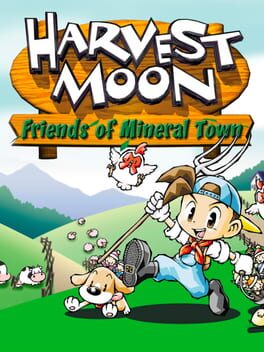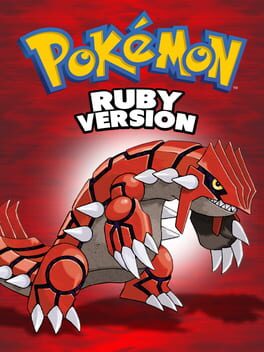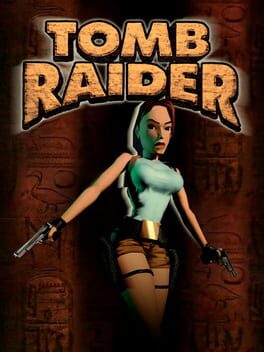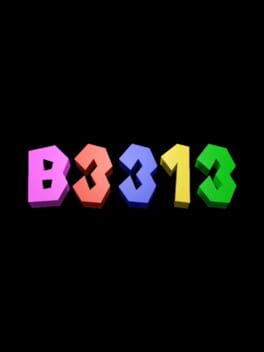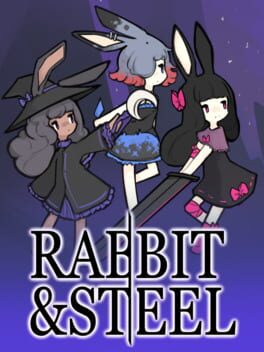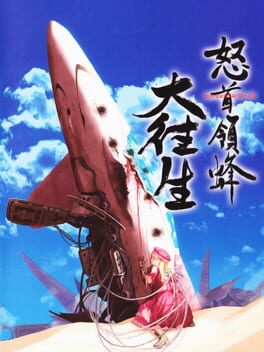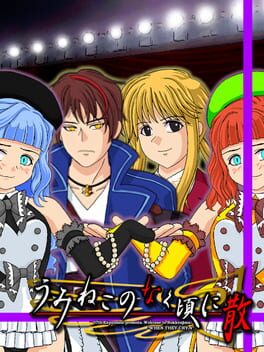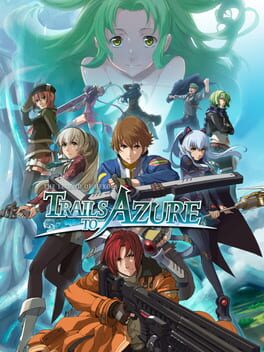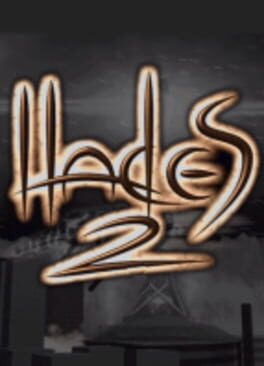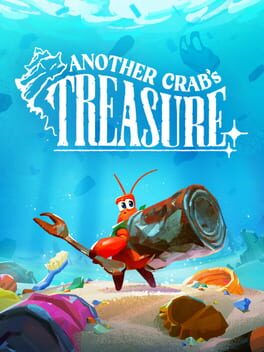MelosHanTani
BACKER
89 Reviews liked by MelosHanTani
Pokémon Ruby Version
2002
Pros: Let me first say... what the hell happened? Why is there so much less, and so many removed features from Gold & Silver? It's like this generation was a reboot of the series, which, is not necessarily a bad thing! In fact, this generation was a great introduction to a whole new age of Pokémon fans. And also, this is our first 16-bit Pokémon game, with detailed sprites, lots of color, and an art style that's super easy on the eyes. It's as if we received a Pokémon game for the Super NES. And while not everything from the previous generation returns, there are some new features to the series here, particularly 2-on-2 "double" battles (which took advantage of the GBA's new four player link cables), and a simple but very useful new mechanic, the run button, yeah, you can just run anywhere on the overworld, which is a nice in-between walking and biking. Also, battle mechanics with new abilities, are refined in this game for the most part, and other new gameplay modes like events such as Contests are pretty neat, where you can build Pokémon stats for beauty, toughness, cuteness, smartness, etc, and put them in a contest where they're judged upon, it's alright. But in general, these new additions didn't hit nearly as hard as the new additions in Gold & Silver did.
Cons: Like I said previously, what the hell happened. In so many ways, this game killed Pokémania for the generation of people that grew up with Red & Blue and moving on to Gold & Silver, such as myself. But the ways it did that, were, one, there was no connecting to the prior generations, no link cable trading, nothing, it was like a hard reset. Which, that just cut the cord for those of us who built upon our journey going from Red to Gold, expecting to go from Gold to Ruby... But nah... And two, no day and night cycles, the real time clock features felt like a significant step down here, not to mention other new features that Gold & Silver introduced were not really expanded in significant ways, like new types or breeding. Gold & Silver introduced so much to the series, that to see this new generation introduce one or two major things, and remove other major elements really sucked... man, what a kick in the gut it was upon first playing. And then comes the Pokémon themselves, and I know this is a very subjective thing, but... I'm not a fan of their new designs here, a lot of new patterns, stripes, zig-zag shapes, somethin' was changing in the way new Pokémon started to look starting with this game, and I'm not sure if it's because the new console power allowed them to showcase more complex designs or what, but I wasn't a fan. Like, what the heck is going on with Blaziken? Why are their legs so long, and standing up like a human person? That whole thing started a bad trend in my opinion for third stage starter Pokémon that's still felt in the series to this day. And the region itself, I don't wanna say too much water, but the land of Hoenn wasn't really doin' it for me either, and another step down from Gold & Silver that allowed us to travel to other regions. Just, time after time, this game paled in comparison to Gold & Silver, and I would not call it an improvement whatsoever.
What it means to me: If you couldn't tell, this was not my Pokémon, and it absolutely killed all hype I had for the series for, I don't know, decades. The gameplay is fine in a vacuum, it's an alright game on its own, but when put up against previous games in the series, it was an awkward reset... If you were someone who grew up with this one, I could see how you'd enjoy it the most, I mean, it's essentially an SNES caliber Pokémon game, that's not a bad quality to have.
Cons: Like I said previously, what the hell happened. In so many ways, this game killed Pokémania for the generation of people that grew up with Red & Blue and moving on to Gold & Silver, such as myself. But the ways it did that, were, one, there was no connecting to the prior generations, no link cable trading, nothing, it was like a hard reset. Which, that just cut the cord for those of us who built upon our journey going from Red to Gold, expecting to go from Gold to Ruby... But nah... And two, no day and night cycles, the real time clock features felt like a significant step down here, not to mention other new features that Gold & Silver introduced were not really expanded in significant ways, like new types or breeding. Gold & Silver introduced so much to the series, that to see this new generation introduce one or two major things, and remove other major elements really sucked... man, what a kick in the gut it was upon first playing. And then comes the Pokémon themselves, and I know this is a very subjective thing, but... I'm not a fan of their new designs here, a lot of new patterns, stripes, zig-zag shapes, somethin' was changing in the way new Pokémon started to look starting with this game, and I'm not sure if it's because the new console power allowed them to showcase more complex designs or what, but I wasn't a fan. Like, what the heck is going on with Blaziken? Why are their legs so long, and standing up like a human person? That whole thing started a bad trend in my opinion for third stage starter Pokémon that's still felt in the series to this day. And the region itself, I don't wanna say too much water, but the land of Hoenn wasn't really doin' it for me either, and another step down from Gold & Silver that allowed us to travel to other regions. Just, time after time, this game paled in comparison to Gold & Silver, and I would not call it an improvement whatsoever.
What it means to me: If you couldn't tell, this was not my Pokémon, and it absolutely killed all hype I had for the series for, I don't know, decades. The gameplay is fine in a vacuum, it's an alright game on its own, but when put up against previous games in the series, it was an awkward reset... If you were someone who grew up with this one, I could see how you'd enjoy it the most, I mean, it's essentially an SNES caliber Pokémon game, that's not a bad quality to have.
Tomb Raider
1996
really great atmosphere, really difficult controls. kind of an underrated masterpiece in spite of that - i was surprised by how much they did in this game and how memorable some of the levels are for coming out in 1996. it goes a lot further than you think it does. the controls also start to make a strange sort of sense after a certain point, but you can't approach them in the same way as contemporary 3D games.
playing Tomb Raider 2 (dear lord) after also made me realize how much restraint this game has by comparison.
playing Tomb Raider 2 (dear lord) after also made me realize how much restraint this game has by comparison.
B3313
2021
can something be obnoxiously juvenile but also a totally unique lightning-in-a-bottle experience at the same time? because that's B3313 to me. the internet iceberg meme/creepypasta origins of this ended up leading to the creation of something that is kind of unlike anything else in existence (even if it is heavily indebted to stuff like Yume Nikki), but it is also somewhat inherently limited by its origins.
it's sort of like if Mario's castle was reimagined as Constantine's Mansion in Thief: The Dark Project, mixed with Yume Nikki and various internet memes. in your endless hours wandering through the confusing labyrinth of the castle, there are isolated moments that are unique and brilliant. and then there others that are just sort of… there. you’ll spend 15 minutes wandering through a bunch of fairly bland, indistinct rooms and corridors and then you’ll come upon something really haunting and memorable. and then, maybe, you'll be right back in the bland mazes. maybe you'll run into some creepy thing and crash the game. maybe creepy thing will be interesting and well executed, or maybe it'll just be obnoxious boilerplate creepypasta stuff.
these contradictions get more and more noticeable the further into it you are. some of the levels are really interesting/bizarre alternate universe takes that recontextualize the original Mario 64 and seem to offer greater commentary about the nature of how nostalgia shifts things into an alternate universe that is actually different from the source of the memory. "i like to remember things my own way. how i remembered them, not necessarily how they happened" says the deeply troubled Fred Madison in David Lynch's Lost Highway. but other times it feels like you wish you were spending more time in the new/more unique areas you occasionally stumble upon, and less in the 6th variation of old Mario 64 levels.
B3313 feels almost like a bigger AAA game to me in both the sheer scope of the project that's filled with a lot of internal contradictions, and in also how much it truly doesn't respect your time. that’s probably the nature of things of this size, and that a lot of people were involved contributing in what seems like a very tumultuous dev cycle after a certain point. but perhaps that explains a lot about the sometimes inconsistent/varied nature of the experience.
i will personally admit to not caring whatsoever about the personalized copy of Mario 64 meme or the numerous ways this hack borrows from different beta builds of Mario 64. i like Mario 64 a lot, but it is absolutely wild to me the way that game has been metabolized into the consciousness of videogame world. and so i do think the whole “this is a beta version of the game” thing and slavishly cobbling together any and every scrap of asset or idea that was cut from an early documented build of Mario 64 to put on this thing is a bit of a dead end artistically. most of the stuff Nintendo used in earlier builds just seemed like temp assets and doesn’t seem THAT interesting to me outside of that context. it's just not very interesting to those of us who are not 17 years old anymore and not still spooked by internet lore. it just feeds back into a lot of fan culture content machine around big franchises that just feels like this self replicating beast that never really goes anywhere and is always invariably beaten back into conformity by the big companies that are in control of these properties.
i am someone who loves strange and unique experiences. but to me, i want stuff that i guess attaches itself more to telling a specific kind of story through what it’s doing, and B3313 is a bit too much online meme-referencing for me to take that aspect of it very seriously at all. B3313 doesn’t have the narrative coherence of a MyHouse which i guess is the other big artsy creepypasta game mod of the moment. and it doesn’t have the artful direction of a Yume Nikki, which it is obviously cribbing the general kind of surreal abstract multidimensional wander maze thing from.
all of this is to say: why did i give it 4 stars and 30+ hours of my time, then? maybe it comes down to: there is an indelible, haunting Tower of Druaga-esque charm to all of it. the commitment to being cryptic and giving the player nothing and doing all these machinations behind the scenes in the game is kind of remystifying what has been lost in a lot of consumer-facing art in general. in games, with all the talk of FromSoft games or like the last couple Zeldas bringing back "old school" difficulties and design values, those are meticulously tested commercial products… not community made romhacks. they simply can’t go anywhere near as far out there as something like this. and we in general are in a moment when so much art seems paralyzed and unwilling to take chances out of risk aversion from industries that have been strip-mined by the rich and powerful. something like B3313 stands in contrast to that - completely unwilling to compromise itself.
with B3313, oftentimes there really is nothing on the other side. but that emptiness starts to feel really intentional after a certain point. as a player, what's interesting in the feeling that you want the design to follow some kind of logic that you can eventually glean so that you can understand what the designers were getting at is that it feels almost like an intentional choice to have it consistently not do that. occasionally it does hint at a deeper language/design sensibility, but mostly it doesn’t. there are times when the “story” or the progression of stages seems to be developing into something more coherent, but then the rug is pulled out from under you. and that happens over and over. because it’s all rug pulls at the end of the day. the message of the design is: whatever happens, whatever journey you go through… it’s all inevitably a way to throw you back into the maze. you’ll always be endlessly wandering the maze.
to me, that says something about Nintendo games in general - how you have these long journeys that (in the case of the newer Zelda especially) aggressively don’t respect your time and send you to all these interesting locations. and then it always just sorta ends, because there’s nothing really deeper at the core a lot of the time. it's escapist entertainment, often with some kind of crypto-conservative values and imagery in it. B3313 feels totally unafraid to unearth and make you fully experience that ugly side.
maybe a lot of our larger culture right now, especially obsessive lore-based fan culture, are just variations of that too. increasingly everything seems like it's hostile, broken down, and filled with different kind of rug pulls. the ground feels totally unstable and there is no “there” there a lot of the time, but we keep shoveling through hoping for new discoveries and hoping for it all to make sense. it’s like being in an abusive, codependent relationship. there’s no light at the end of the tunnel. it’s a disempowerment fantasy. and B3313 captures that feeling absolutely perfectly, in such a uniquely fleshed out way.
there are moments to B3313 that are genuinely unique and fun too, like some of the more creative creepypasta scenarios that i won’t spoil here. or like, occasional stages like the one when you have to climb some structures that are supposed to be some sort of bob-omb factory. you activate the “self-destruct” sequence when you enter which causes you to have to outrun rising lava until the top. and then you get to the top and there’s a little yellow bob-omb guy sitting in a little office and just complaining about how you destroyed the whole factory. it does make me wonder if there’s like some kind of commentary on the tropes of Mario games being attempted in small moments like that. like the fact that Mario is basically a cipher who everything resolves around, and none of these other characters have any agency.
of course, none of that is delved upon for very long. because invariably, you're going to get fed back into the maze. and so that's both the great strength and the great flaw of something like B3313. it doesn't try to offer a way out, it just tries to express what is there. and in doing so it captures a feeling perfectly, in a way that is inspiring. even as a memey internet romhack, it is absolutely something i would call an "art game". there are a lot of memorable areas and moments that really explores the latent strangeness and darkness of Nintendo games, and the latent surrealism of a lot ofearly 3D games in general. it’s also real testament to how far romhacking/modding community projects can really go artistically, along with MyHouse.wad. it could have an enormous impact on a lot of games stuff that comes further down the line. so it’s definitely something that demands more attention and respect outside the whole memey lore ecosystem a lot of this stuff usually occupies. it of course, comes from that however and will probably will do itself no favors in distinguishing itself from that.
i only hope in the future that people take the ambition and interesting ideas from this and run with it in a way that feels unafraid to make a larger statement about the world, and doesn't just do the cowardly thing of retreating with its tail between its legs back into insular internet memes and the online lore ecosystem fed by various content creators. whether or not you think B3313 subverts or further perpetuates that that i guess is up to you. but i still think we have a pretty far way to go.
it's sort of like if Mario's castle was reimagined as Constantine's Mansion in Thief: The Dark Project, mixed with Yume Nikki and various internet memes. in your endless hours wandering through the confusing labyrinth of the castle, there are isolated moments that are unique and brilliant. and then there others that are just sort of… there. you’ll spend 15 minutes wandering through a bunch of fairly bland, indistinct rooms and corridors and then you’ll come upon something really haunting and memorable. and then, maybe, you'll be right back in the bland mazes. maybe you'll run into some creepy thing and crash the game. maybe creepy thing will be interesting and well executed, or maybe it'll just be obnoxious boilerplate creepypasta stuff.
these contradictions get more and more noticeable the further into it you are. some of the levels are really interesting/bizarre alternate universe takes that recontextualize the original Mario 64 and seem to offer greater commentary about the nature of how nostalgia shifts things into an alternate universe that is actually different from the source of the memory. "i like to remember things my own way. how i remembered them, not necessarily how they happened" says the deeply troubled Fred Madison in David Lynch's Lost Highway. but other times it feels like you wish you were spending more time in the new/more unique areas you occasionally stumble upon, and less in the 6th variation of old Mario 64 levels.
B3313 feels almost like a bigger AAA game to me in both the sheer scope of the project that's filled with a lot of internal contradictions, and in also how much it truly doesn't respect your time. that’s probably the nature of things of this size, and that a lot of people were involved contributing in what seems like a very tumultuous dev cycle after a certain point. but perhaps that explains a lot about the sometimes inconsistent/varied nature of the experience.
i will personally admit to not caring whatsoever about the personalized copy of Mario 64 meme or the numerous ways this hack borrows from different beta builds of Mario 64. i like Mario 64 a lot, but it is absolutely wild to me the way that game has been metabolized into the consciousness of videogame world. and so i do think the whole “this is a beta version of the game” thing and slavishly cobbling together any and every scrap of asset or idea that was cut from an early documented build of Mario 64 to put on this thing is a bit of a dead end artistically. most of the stuff Nintendo used in earlier builds just seemed like temp assets and doesn’t seem THAT interesting to me outside of that context. it's just not very interesting to those of us who are not 17 years old anymore and not still spooked by internet lore. it just feeds back into a lot of fan culture content machine around big franchises that just feels like this self replicating beast that never really goes anywhere and is always invariably beaten back into conformity by the big companies that are in control of these properties.
i am someone who loves strange and unique experiences. but to me, i want stuff that i guess attaches itself more to telling a specific kind of story through what it’s doing, and B3313 is a bit too much online meme-referencing for me to take that aspect of it very seriously at all. B3313 doesn’t have the narrative coherence of a MyHouse which i guess is the other big artsy creepypasta game mod of the moment. and it doesn’t have the artful direction of a Yume Nikki, which it is obviously cribbing the general kind of surreal abstract multidimensional wander maze thing from.
all of this is to say: why did i give it 4 stars and 30+ hours of my time, then? maybe it comes down to: there is an indelible, haunting Tower of Druaga-esque charm to all of it. the commitment to being cryptic and giving the player nothing and doing all these machinations behind the scenes in the game is kind of remystifying what has been lost in a lot of consumer-facing art in general. in games, with all the talk of FromSoft games or like the last couple Zeldas bringing back "old school" difficulties and design values, those are meticulously tested commercial products… not community made romhacks. they simply can’t go anywhere near as far out there as something like this. and we in general are in a moment when so much art seems paralyzed and unwilling to take chances out of risk aversion from industries that have been strip-mined by the rich and powerful. something like B3313 stands in contrast to that - completely unwilling to compromise itself.
with B3313, oftentimes there really is nothing on the other side. but that emptiness starts to feel really intentional after a certain point. as a player, what's interesting in the feeling that you want the design to follow some kind of logic that you can eventually glean so that you can understand what the designers were getting at is that it feels almost like an intentional choice to have it consistently not do that. occasionally it does hint at a deeper language/design sensibility, but mostly it doesn’t. there are times when the “story” or the progression of stages seems to be developing into something more coherent, but then the rug is pulled out from under you. and that happens over and over. because it’s all rug pulls at the end of the day. the message of the design is: whatever happens, whatever journey you go through… it’s all inevitably a way to throw you back into the maze. you’ll always be endlessly wandering the maze.
to me, that says something about Nintendo games in general - how you have these long journeys that (in the case of the newer Zelda especially) aggressively don’t respect your time and send you to all these interesting locations. and then it always just sorta ends, because there’s nothing really deeper at the core a lot of the time. it's escapist entertainment, often with some kind of crypto-conservative values and imagery in it. B3313 feels totally unafraid to unearth and make you fully experience that ugly side.
maybe a lot of our larger culture right now, especially obsessive lore-based fan culture, are just variations of that too. increasingly everything seems like it's hostile, broken down, and filled with different kind of rug pulls. the ground feels totally unstable and there is no “there” there a lot of the time, but we keep shoveling through hoping for new discoveries and hoping for it all to make sense. it’s like being in an abusive, codependent relationship. there’s no light at the end of the tunnel. it’s a disempowerment fantasy. and B3313 captures that feeling absolutely perfectly, in such a uniquely fleshed out way.
there are moments to B3313 that are genuinely unique and fun too, like some of the more creative creepypasta scenarios that i won’t spoil here. or like, occasional stages like the one when you have to climb some structures that are supposed to be some sort of bob-omb factory. you activate the “self-destruct” sequence when you enter which causes you to have to outrun rising lava until the top. and then you get to the top and there’s a little yellow bob-omb guy sitting in a little office and just complaining about how you destroyed the whole factory. it does make me wonder if there’s like some kind of commentary on the tropes of Mario games being attempted in small moments like that. like the fact that Mario is basically a cipher who everything resolves around, and none of these other characters have any agency.
of course, none of that is delved upon for very long. because invariably, you're going to get fed back into the maze. and so that's both the great strength and the great flaw of something like B3313. it doesn't try to offer a way out, it just tries to express what is there. and in doing so it captures a feeling perfectly, in a way that is inspiring. even as a memey internet romhack, it is absolutely something i would call an "art game". there are a lot of memorable areas and moments that really explores the latent strangeness and darkness of Nintendo games, and the latent surrealism of a lot ofearly 3D games in general. it’s also real testament to how far romhacking/modding community projects can really go artistically, along with MyHouse.wad. it could have an enormous impact on a lot of games stuff that comes further down the line. so it’s definitely something that demands more attention and respect outside the whole memey lore ecosystem a lot of this stuff usually occupies. it of course, comes from that however and will probably will do itself no favors in distinguishing itself from that.
i only hope in the future that people take the ambition and interesting ideas from this and run with it in a way that feels unafraid to make a larger statement about the world, and doesn't just do the cowardly thing of retreating with its tail between its legs back into insular internet memes and the online lore ecosystem fed by various content creators. whether or not you think B3313 subverts or further perpetuates that that i guess is up to you. but i still think we have a pretty far way to go.
Rabbit & Steel
2024
Condenses the MMO raiding experience into a bite-sized bullet hell that's five thousand times harder than any raid I've ever done as a prog raider in my entire raiding career. I love it! Simple rotations and complex item interactions means that no two runs are alike in builds, and since it's not an MMO you don't have to grind forever or get 20+ of your friends to play in order to enjoy it. Excellent stuff. Reminds me a little of Suguri and Gundeadligne, two of my favorite doujin games, to boot.
DoDonPachi DaiOuJou
2002
It's not that hard to make a bullet hell that puts you on the tightrope, much less a difficult one. It's enough to fill the screen of bullets with any excuse, the natural reaction will be to feel overwhelmed looking for the few safe spots at hand. What is hard to do is to achieve this level of creativity and elegance.
It is not only that DaiOuJou is the summit (or at least one of them) of a very specific style (danmaku) developed by a very specific circle (CAVE, starting from the impulse left by Toaplan and other descendants such as Raizing or Takumi) or a very specific person (Tsuneki Ikeda, who had been defining his style here for more than a decade since his beginnings in Toaplan), but it is a nonstop of ideas that, always maintaining a stylistic cohesion, keep each playthrough fresh because of its radical approach variations.
Something as simple, satisfying and seen afterwards as the sequence of giant enemies constantly canceling bullets when destroyed here is nothing more than a section of a level. Getting across between bullets, an easy method to achieve tension as seen in Mushihimesama Futari, a game a bit exceeding in this resource, achieves elegance by building on varied layers of bullet sweeps. A clear example is the wasp section of the fifth level. Not only stands out because of making the small enemies follow a very peculiar rail movement, or because of their alternative appearances covering the entire width of the game, or because of being protected by giant wasps that serve as a shield and as another layer of bullets to the obstacle course, but stands out because of the creativity and care of the whole. Because of having to rethink a new strategy when everything seemed under control.
The slightly superior Black Label version also enhances one of the greatest virtues of the original game that represents its philosophy very well: the hyper. A double-edged weapon that allows you to deal more damage and cover more screen in exchange of increasing the speed and cadence of enemy bullets, a mechanic that in this revision appears more frequently, encouraging to risk and improvise, the moments where the spirit of the style truly shines.
Of course, it could be criticized that the CAVE or Ikeda ideas are conservative, and even that they have given birth to descendants incapable of innovating making certain rules as unbreakable laws. However, to me it is not an accurate criticism. The fear, inexperience or ineptitude of some when it comes to achieving their own style or such a level of elegance is not the fault of the original inspiration, and the obsessive reiteration of an author or a circle on the same philosophy is far from the easily confused repetition for comfort and security. If anything, what is interesting about the style that culminates here, and that would attempt to reach the general public in later games, is giving everything for a genre lost in an arcade style that was already considered little more than a relic. Knowing that few were going to play and even fewer comprehend.
If what we want is the rare maturity in the medium of someone capable of working their style until it becomes unique, robust and unrecognizable from the influences that germinated it, like the style of Toaplan of which there is no trace left, DoDonPachi DaiOuJou is nothing but one of the clearest examples.
It is not only that DaiOuJou is the summit (or at least one of them) of a very specific style (danmaku) developed by a very specific circle (CAVE, starting from the impulse left by Toaplan and other descendants such as Raizing or Takumi) or a very specific person (Tsuneki Ikeda, who had been defining his style here for more than a decade since his beginnings in Toaplan), but it is a nonstop of ideas that, always maintaining a stylistic cohesion, keep each playthrough fresh because of its radical approach variations.
Something as simple, satisfying and seen afterwards as the sequence of giant enemies constantly canceling bullets when destroyed here is nothing more than a section of a level. Getting across between bullets, an easy method to achieve tension as seen in Mushihimesama Futari, a game a bit exceeding in this resource, achieves elegance by building on varied layers of bullet sweeps. A clear example is the wasp section of the fifth level. Not only stands out because of making the small enemies follow a very peculiar rail movement, or because of their alternative appearances covering the entire width of the game, or because of being protected by giant wasps that serve as a shield and as another layer of bullets to the obstacle course, but stands out because of the creativity and care of the whole. Because of having to rethink a new strategy when everything seemed under control.
The slightly superior Black Label version also enhances one of the greatest virtues of the original game that represents its philosophy very well: the hyper. A double-edged weapon that allows you to deal more damage and cover more screen in exchange of increasing the speed and cadence of enemy bullets, a mechanic that in this revision appears more frequently, encouraging to risk and improvise, the moments where the spirit of the style truly shines.
Of course, it could be criticized that the CAVE or Ikeda ideas are conservative, and even that they have given birth to descendants incapable of innovating making certain rules as unbreakable laws. However, to me it is not an accurate criticism. The fear, inexperience or ineptitude of some when it comes to achieving their own style or such a level of elegance is not the fault of the original inspiration, and the obsessive reiteration of an author or a circle on the same philosophy is far from the easily confused repetition for comfort and security. If anything, what is interesting about the style that culminates here, and that would attempt to reach the general public in later games, is giving everything for a genre lost in an arcade style that was already considered little more than a relic. Knowing that few were going to play and even fewer comprehend.
If what we want is the rare maturity in the medium of someone capable of working their style until it becomes unique, robust and unrecognizable from the influences that germinated it, like the style of Toaplan of which there is no trace left, DoDonPachi DaiOuJou is nothing but one of the clearest examples.
Yeah, I'm completely checked out. First 3/4s of the tea party was maybe the most hyped I've ever been playing umineko but the sappy way it resolves ruins it, and the rest of the episode's a snoozefest.
Gonna play ep 8 of course but this is a huge step down from higurashi. Ryukishi focused so much on the pointlessly reader-adversarial mystery that he forgot to tell a good story.
Gonna play ep 8 of course but this is a huge step down from higurashi. Ryukishi focused so much on the pointlessly reader-adversarial mystery that he forgot to tell a good story.
Animal Well
2024
Animal Well Done
Like seemingly everyone, my appeal and interest in 2024's Animal Well stemmed from my even much earlier interest in Videogamedunkey, the head honcho of its publisher BIGMODE and longtime Youtube veteran. A fan of his for over a decade, cutting my teeth watching his now archaic League of Legends content, I knew that he had a knack (heh) for games that were fun if nothing else. I've disagreed with my fair share of his takes, but I knew with the announcement of Animal Well that there was a vision he had in Billy Basso's breakout title. Like many others, I waited with bated breath with more information about the game's mechanics and release date. Release came and reviews were staggeringly high for the ambitious sub fifty megabyte title, whose marketing campaign effectively boiled down to "Let Dunkey cook."
A disclaimer for this review: I struggle with Metroidvania's from a personal standpoint. I've played a handful of Metroid's, got into The Messenger, and maybe one whole hour of Bloodstained: Ritual of the Night, but I could never stick with them on the principal of how they play. Without a consistent path of clear exploration towards narrative completion, I struggle for reasons unknown. With Metroid I had a hard time putting together item unlocks to their eventual applications, and didn't do too well in remembering where to traverse. My problems with previous experiences translated almost completely to Animal Well which was... well quite a good game regardless.
Animal Well is gorgeous, one of the factors most apparent in its reveal. Each screen is filled to the brim with colour and purpose, the backdrops consisting mainly of statues, mysterious creatures, and absconding movements of water. As my little blob made his way through the games sub ten hour runtime (probably shorter if chasing the main path,) my eyes scanned just about everything within the environment because of the visual reward that entailed. One touch I greatly appreciated is the (optional) setting that places faux CRT scanlines on the screen for a more mysterious vintage feel. For a game as consistently dark and dimly lit as Animal Well, having a feature that exaggerates its despair and gorgeous loneliness like that accents your time with the game in quite a great way.
Platforming and movement in Animal Well is fairly par for the course within the realm of 2D platformers and metroidvanias as a whole. You use a small selection of items naturally found through exploration for traversal and puzzle completion. Apt timing is required for successful jumps, and running is done at a brisk enough pace to make the game feel like it has a sense of urgency and quick completion to it. One thing I do want to commend the title on within this space is that it never feels like it is trying to do too much or require a finesse in perfect timing or long jump sequences. Though the puzzles can become slightly infuriating and rub you the wrong way, the issue rarely lied in me having to gamble on a perfect platforming sequence.
I said "rarely" in that last paragraph because of one of my main gripes with Animal Well, which I might as well start off with now. One of the notable features of the game is that there is no combat... but the catch is that there are enemies. How do you fight enemies in a game where you can't actually hit them? By running away! This isn't the end of the world in theory but it leads into another issue with Animal Well: the save system. Not unfamiliar for the genre but saving and checkpoints happen at telephones scattered around the map. These are mostly well located and central to places in which you spend your time and often do unlock as you progress to become even more centralized than you first encounter them, but not all is well that ends well. There are several mandatory chasing encounters in which you must run away from a big bad that follows you screen to screen. Death, which can happen by taking damage down to zero hearts or being crushed by an object, leads you to reset at the most recently visited aforementioned telephone. I spent a disgusting amount of time last night failing in the late stages of a chase sequence only to reset at a telephone, having to run all the way to the encounter, and then run all the way to attempt to complete the segment. As a Souls player I am no stranger to runbacks, but doing this ad nauseum and having to repeat and repeat which the occasional random instant death on a platforming sequence was infuriating. Animal Well in multiple points lacks respect for player free time in having to traverse to an area where you had progressed. This becomes more annoying in the chases because you can't pause and open the map... an unfortunate page to take out of the Dark Souls cook book.
Overall Animal Well is a phenomenal debut title for BIGMODE and an impressive title put forward by Billy Basso. Even though there's no real narrative to stick to, the save system requires a lot of work, and the chase scenes are needlessly grifting... this game has a lot to like about it. I'd recommend Animal Well to casual Dunkey fans or fans of Metroidvania's.
Like seemingly everyone, my appeal and interest in 2024's Animal Well stemmed from my even much earlier interest in Videogamedunkey, the head honcho of its publisher BIGMODE and longtime Youtube veteran. A fan of his for over a decade, cutting my teeth watching his now archaic League of Legends content, I knew that he had a knack (heh) for games that were fun if nothing else. I've disagreed with my fair share of his takes, but I knew with the announcement of Animal Well that there was a vision he had in Billy Basso's breakout title. Like many others, I waited with bated breath with more information about the game's mechanics and release date. Release came and reviews were staggeringly high for the ambitious sub fifty megabyte title, whose marketing campaign effectively boiled down to "Let Dunkey cook."
A disclaimer for this review: I struggle with Metroidvania's from a personal standpoint. I've played a handful of Metroid's, got into The Messenger, and maybe one whole hour of Bloodstained: Ritual of the Night, but I could never stick with them on the principal of how they play. Without a consistent path of clear exploration towards narrative completion, I struggle for reasons unknown. With Metroid I had a hard time putting together item unlocks to their eventual applications, and didn't do too well in remembering where to traverse. My problems with previous experiences translated almost completely to Animal Well which was... well quite a good game regardless.
Animal Well is gorgeous, one of the factors most apparent in its reveal. Each screen is filled to the brim with colour and purpose, the backdrops consisting mainly of statues, mysterious creatures, and absconding movements of water. As my little blob made his way through the games sub ten hour runtime (probably shorter if chasing the main path,) my eyes scanned just about everything within the environment because of the visual reward that entailed. One touch I greatly appreciated is the (optional) setting that places faux CRT scanlines on the screen for a more mysterious vintage feel. For a game as consistently dark and dimly lit as Animal Well, having a feature that exaggerates its despair and gorgeous loneliness like that accents your time with the game in quite a great way.
Platforming and movement in Animal Well is fairly par for the course within the realm of 2D platformers and metroidvanias as a whole. You use a small selection of items naturally found through exploration for traversal and puzzle completion. Apt timing is required for successful jumps, and running is done at a brisk enough pace to make the game feel like it has a sense of urgency and quick completion to it. One thing I do want to commend the title on within this space is that it never feels like it is trying to do too much or require a finesse in perfect timing or long jump sequences. Though the puzzles can become slightly infuriating and rub you the wrong way, the issue rarely lied in me having to gamble on a perfect platforming sequence.
I said "rarely" in that last paragraph because of one of my main gripes with Animal Well, which I might as well start off with now. One of the notable features of the game is that there is no combat... but the catch is that there are enemies. How do you fight enemies in a game where you can't actually hit them? By running away! This isn't the end of the world in theory but it leads into another issue with Animal Well: the save system. Not unfamiliar for the genre but saving and checkpoints happen at telephones scattered around the map. These are mostly well located and central to places in which you spend your time and often do unlock as you progress to become even more centralized than you first encounter them, but not all is well that ends well. There are several mandatory chasing encounters in which you must run away from a big bad that follows you screen to screen. Death, which can happen by taking damage down to zero hearts or being crushed by an object, leads you to reset at the most recently visited aforementioned telephone. I spent a disgusting amount of time last night failing in the late stages of a chase sequence only to reset at a telephone, having to run all the way to the encounter, and then run all the way to attempt to complete the segment. As a Souls player I am no stranger to runbacks, but doing this ad nauseum and having to repeat and repeat which the occasional random instant death on a platforming sequence was infuriating. Animal Well in multiple points lacks respect for player free time in having to traverse to an area where you had progressed. This becomes more annoying in the chases because you can't pause and open the map... an unfortunate page to take out of the Dark Souls cook book.
Overall Animal Well is a phenomenal debut title for BIGMODE and an impressive title put forward by Billy Basso. Even though there's no real narrative to stick to, the save system requires a lot of work, and the chase scenes are needlessly grifting... this game has a lot to like about it. I'd recommend Animal Well to casual Dunkey fans or fans of Metroidvania's.
Cleared on Hard, finished all side-quests. Finished it a while ago, but it's still stuck in my craw, so I feel like writing a review. I'm not going to spoil anything directly but I'm definitely giving impressions of the whole game, so if you're particularly sensitive to spoilers maybe dip now.
This was obviously lovely in a lot of ways, but I think this is where I get off the Trails train for a while. Trails has never been big on stakes, but the lack of lethality to anything in Zero and Azure is just devastating. There's no weight to this anymore. The big scary villains aren't scary because I know no one's ever ever going to die.
It's especially weird because Zero gets most of its resonance from paying off an extremely dark character thread set up in 3rd. You'd think they'd realize it's good to have some edge every now and then in a massive fantasy epic. But if there was any edge left in Zero then it's completely gone in Azure; this is one of the most bloodless stories ostensibly about revolution I've ever seen. The new emphasis on light dating sim mechanics means we also don't get a strong core romance like in Sky. I didn't get to see any of the meager sparks between Elie and Lloyd pay off because I didn't buy her enough stuffed animals to put in her room, whoops.
It's a shame because the character writing is as lovely as ever. I finally upped the difficulty to Hard for this one and I should've done it sooner, it feels amazing and the bosses are super-chunky and fun to unravel. The music and art and setting texture are as gorgeous as always. But at this point Trails is a romance where nobody fucks and a war epic where nobody dies. I've lost my patience for that for the moment.
This was obviously lovely in a lot of ways, but I think this is where I get off the Trails train for a while. Trails has never been big on stakes, but the lack of lethality to anything in Zero and Azure is just devastating. There's no weight to this anymore. The big scary villains aren't scary because I know no one's ever ever going to die.
It's especially weird because Zero gets most of its resonance from paying off an extremely dark character thread set up in 3rd. You'd think they'd realize it's good to have some edge every now and then in a massive fantasy epic. But if there was any edge left in Zero then it's completely gone in Azure; this is one of the most bloodless stories ostensibly about revolution I've ever seen. The new emphasis on light dating sim mechanics means we also don't get a strong core romance like in Sky. I didn't get to see any of the meager sparks between Elie and Lloyd pay off because I didn't buy her enough stuffed animals to put in her room, whoops.
It's a shame because the character writing is as lovely as ever. I finally upped the difficulty to Hard for this one and I should've done it sooner, it feels amazing and the bosses are super-chunky and fun to unravel. The music and art and setting texture are as gorgeous as always. But at this point Trails is a romance where nobody fucks and a war epic where nobody dies. I've lost my patience for that for the moment.
Hades 2
2001
Dark Souls III
2016
RoboWarrior
1987
SeaBed
2016
In terms of the intensity and depth of the emotional response it engendered in me, Seabed compares neatly with The House in Fata Morgana. It takes a completely different, much quieter and subtler path to get there, obviously. Fata Morgana gets there with the most hard hitting melodrama possible. Seabed gets there through countless quiet moments, all working in concert to slowly weave a spell over you without you even realizing.
As a text game dev, I deeply appreciate the presentation. The whole story is told through VA-less NVL-mode walls of text, borrowed royalty-free music, as few VN presentation tricks as humanly possible, and a combo of blurred photo and cheap blender backgrounds. The only major points of aesthetic interest are the beautiful character illustrations by hide38 (who also wrote the script).
And the story still hits like a truck. When you make your characters and their longings feel this real in the reader's heart, you don't need voice acting or a bunch of expensive one-off assets. Seabed does exactly what it needs to with the presentation to support the writing, then gets out of the way and lets the story speak for itself. I think that's really admirable, and speaks to a confidence that a lot of devs would benefit from.
If all this sounds back-handed, it shouldn't. Some of the most well-loved VNs in history are doujin games like Higurashi or Tsukihime, which used similar aesthetic shortcuts. I cherish many VNs with super-loved-on presentation. But my favorites will always be the ones that make me believe in their stories, and you get there first and foremost with strong writing.
Seabed is as affecting a story as any visual novel I've read. I don't have much to say beyond that that wouldn't spoil the shape of the story (hence why I spent three paragraphs soapboxing about VN direction). If you're up for the slowest of slow burns, and you appreciate VNs with grown-up theming that don't talk down to you, give this one a read.
As a text game dev, I deeply appreciate the presentation. The whole story is told through VA-less NVL-mode walls of text, borrowed royalty-free music, as few VN presentation tricks as humanly possible, and a combo of blurred photo and cheap blender backgrounds. The only major points of aesthetic interest are the beautiful character illustrations by hide38 (who also wrote the script).
And the story still hits like a truck. When you make your characters and their longings feel this real in the reader's heart, you don't need voice acting or a bunch of expensive one-off assets. Seabed does exactly what it needs to with the presentation to support the writing, then gets out of the way and lets the story speak for itself. I think that's really admirable, and speaks to a confidence that a lot of devs would benefit from.
If all this sounds back-handed, it shouldn't. Some of the most well-loved VNs in history are doujin games like Higurashi or Tsukihime, which used similar aesthetic shortcuts. I cherish many VNs with super-loved-on presentation. But my favorites will always be the ones that make me believe in their stories, and you get there first and foremost with strong writing.
Seabed is as affecting a story as any visual novel I've read. I don't have much to say beyond that that wouldn't spoil the shape of the story (hence why I spent three paragraphs soapboxing about VN direction). If you're up for the slowest of slow burns, and you appreciate VNs with grown-up theming that don't talk down to you, give this one a read.
